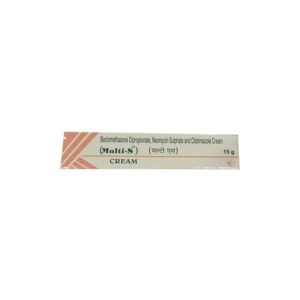BECLOMETHASONE + CLOTRIMAZOLE + NEOMYCIN
Beclomethasone: Beclomethasone is a corticosteroid medication that is primarily used to control and prevent symptoms of asthma. It belongs to a class of drugs called glucocorticoids, which work by reducing inflammation in the airways and making it easier to breathe.
This drug is available in both oral and inhalation forms. The inhalation form is the most commonly prescribed and is used as a regular maintenance treatment for people with persistent asthma. It is not used for sudden asthma attacks or as a rescue medication.
Beclomethasone works by reducing the production of inflammatory chemicals in the lungs, such as leukotrienes and prostaglandins, which can cause airway constriction and inflammation. By decreasing inflammation, it helps to prevent or reduce asthma symptoms, such as wheezing, shortness of breath, and coughing.
The dose of beclomethasone varies depending on the individual and the severity of asthma symptoms. It is usually recommended to take it regularly, as prescribed by a healthcare professional, to maintain control of asthma symptoms. The usual starting dose for adults is 200-400 micrograms twice daily, but this can be adjusted based on the response.
Like any medication, beclomethasone may cause side effects. Some common side effects include throat irritation, coughing, hoarseness, and dry mouth. These side effects can usually be minimized by rinsing the mouth with water and spitting it out after each inhalation. Rarely, this medication can cause more severe side effects such as oral thrush (fungal infection in the mouth) or adrenal suppression (reducing the body’s natural production of corticosteroids). It is important to use beclomethasone as prescribed and inform your healthcare provider about any concerns or side effects that occur.
Overall, beclomethasone is an effective and commonly used medication for the long-term management of asthma. It is important to use it regularly and as directed to achieve optimal control of asthma symptoms and reduce the risk of exacerbations.
Clotrimazole: Clotrimazole is an antifungal medication that is commonly used to treat fungal infections in various parts of the body, including the skin, mouth, and vagina. It belongs to the class of drugs known as azoles.
The primary mechanism of action of clotrimazole is to inhibit the growth and replication of fungi. It does this by disrupting the synthesis of ergosterol, a key component of fungal cell membranes. By inhibiting ergosterol synthesis, clotrimazole weakens the cell membrane, leading to cell death and ultimately resolving the infection.
Clotrimazole is available in several forms, including creams, powders, troches (lozenges), and vaginal tablets. The specific dose and duration of treatment may vary depending on the site and severity of the infection. In general, it is typically applied topically to the affected area two to three times a day, or as directed by a healthcare professional. For vaginal infections, clotrimazole is usually administered intravaginally as a single dose or for a prescribed duration.
Side effects of clotrimazole are usually mild and uncommon. Common side effects may include skin irritation, redness, itching, or burning at the application site. Rare allergic reactions such as rash, hives, or difficulty breathing may also occur. If any severe or persistent side effects are experienced, it is important to seek medical attention promptly.
It is important to note that clotrimazole is primarily effective against fungal infections and may not be effective against bacterial or viral infections. It is always recommended to consult a healthcare professional before starting clotrimazole or any other medication to ensure it is appropriate for the specific condition.
Neomycin: Neomycin is an antibiotic drug that is commonly used to treat a variety of bacterial infections. It belongs to the aminoglycoside class of antibiotics and works by interfering with the synthesis of proteins in bacteria, ultimately leading to their death.
This drug is primarily used to treat infections of the gastrointestinal tract, particularly those caused by certain types of bacteria. It is also effective against other bacterial infections such as skin infections, urinary tract infections, and eye infections. Neomycin is often used in combination with other antibiotics to enhance their effectiveness.
Neomycin is most commonly administered orally in the form of tablets or capsules, but it can also be given by injection when necessary. The dosage of neomycin varies depending on the type and severity of the infection, as well as the patient’s age and overall health. It is important to follow the prescribed dosage and duration of treatment as directed by a healthcare professional.
As with any medication, neomycin can cause side effects. Common side effects include nausea, vomiting, diarrhea, and stomach cramps. These gastrointestinal disturbances are quite common and usually resolve on their own. However, if these side effects persist or worsen, it is important to inform your doctor.
In some cases, neomycin can cause more serious side effects. Rare but severe side effects may include kidney damage, hearing loss, and allergic reactions. It is important to seek immediate medical attention if any signs of an allergic reaction occur, such as rash, itching, swelling, severe dizziness, or difficulty breathing.
Neomycin may also interact with certain medications, vitamins, or minerals, so it is crucial to inform your healthcare provider about all the medications you are taking before starting neomycin treatment.
Overall, neomycin is an effective antibiotic used to treat a range of bacterial infections. However, like any medication, it should be used under the guidance of a healthcare professional, and the potential risks and benefits should be carefully considered.

